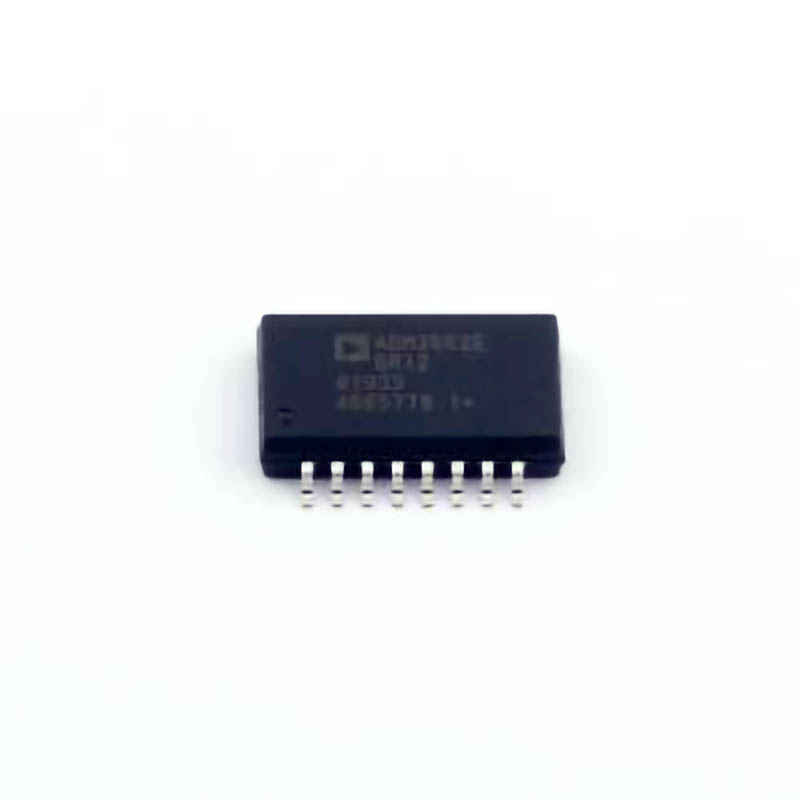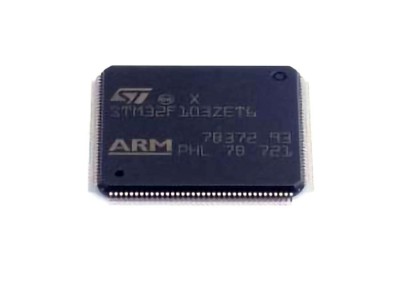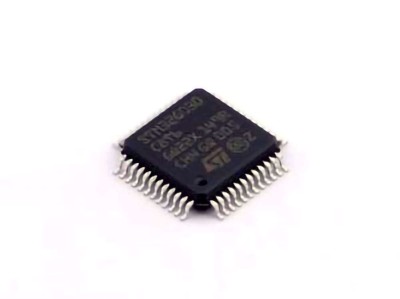
The ADM2682EBRIZ is a robust and reliable isolated RS-485/RS-422 transceiver , widely used in industrial applications and critical Communication systems. However, like any electronic component, it can sometimes present challenges during installation or operation. In this article, we delve into common troubleshooting scenarios and solutions, helping users resolve issues effectively to ensure optimal performance.
ADM2682EBRIZ, troubleshooting, RS-485 transceiver, isolated transceiver, industrial communication, circuit design, data transmission, signal integrity, system diagnostics, electronic components
Common Issues and Troubleshooting for ADM2682EBRIZ Transceiver
The ADM2682EBRIZ is an isolated RS-485/RS-422 transceiver designed to provide reliable and noise-resistant data transmission in harsh industrial environments. It is an essential component for enabling robust communication in complex systems such as industrial control networks, automated machinery, and remote monitoring applications. However, like any advanced electronic component, users may encounter issues during design, installation, or operation. In this first part of our guide, we will explore some common troubleshooting scenarios and provide effective solutions for each.
1. Incorrect Communication or No Data Transmission
One of the most frequent issues faced by engineers and system integrators is when the ADM2682EBRIZ transceiver fails to transmit or receive data. This can manifest in a variety of ways, from complete communication breakdowns to garbled or corrupted data.
Common Causes:
Incorrect Wiring or Pin Connections: RS-485 communication requires proper wiring between the transceiver and other network devices. A mistake in wiring, such as swapped A and B lines or incorrect connections to the DE/RE (Driver Enable/Receiver Enable) pins, can cause communication issues.
Power Supply Issues: Insufficient or unstable power to the ADM2682EBRIZ can result in a lack of communication. This could be due to inadequate power voltage levels or poor decoupling capacitor s.
Faulty Termination Resistors : RS-485 networks often require termination resistors at both ends of the bus to maintain signal integrity. If these resistors are missing or incorrectly placed, signal reflections can occur, resulting in communication failures.
Solutions:
Check Wiring: Carefully verify that the A and B lines are correctly connected to the appropriate terminals. Ensure the DE and RE pins are correctly configured for the intended mode (transmit or receive). Incorrect configuration of these pins can prevent the device from switching between sending and receiving data.
Verify Power Supply: Confirm that the voltage supplied to the ADM2682EBRIZ meets the device’s specifications. Also, ensure that decoupling capacitors are used close to the power pins to minimize power noise and voltage dips, which can lead to malfunctions.
Install Termination Resistors: Use appropriate termination resistors (typically 120Ω) at both ends of the RS-485 bus. This will help eliminate signal reflections and improve the quality of data transmission.
2. Signal Integrity Issues (Noise and Interference)
In industrial settings, signal integrity is a crucial factor for reliable communication. Noise and electromagnetic interference ( EMI ) from nearby machinery, power lines, and other devices can corrupt data transmitted via RS-485. This is especially problematic in systems where long cable lengths or harsh environmental conditions are involved.
Common Causes:
Long Cable Runs: RS-485 communication can suffer from signal degradation when used with long cable lengths. The resistance of the cable increases with distance, which can attenuate the signal and reduce its quality.
Electromagnetic Interference (EMI): Industrial environments often have high levels of EMI, which can induce noise in the RS-485 signal, leading to data corruption.
Improper Grounding: Inadequate grounding of the transceiver or the network can introduce noise into the system, which can degrade signal quality.
Solutions:
Limit Cable Length: Use the shortest cable length possible for your RS-485 network. If long runs are necessary, consider using low-resistance cables with good shielding to minimize signal loss and degradation.
Use Twisted Pair Cables: RS-485 signals can be transmitted more reliably over twisted-pair cables, which are better at rejecting common-mode noise. Ensure that the A and B lines are twisted together and that the shield (if present) is grounded properly.
Implement Proper Grounding: Ensure that the system is well-grounded to minimize noise pickup. Use shielded cables where necessary, and ensure the shielding is grounded at a single point to avoid ground loops.
3. Inconsistent Voltage Levels on the Data Bus
Another common issue arises when voltage levels on the RS-485 bus are inconsistent or outside the expected range. The ADM2682EBRIZ, like all RS-485 devices, requires a specific voltage range for the logic states. If the voltage levels deviate too far from the expected values, the transceiver may not be able to correctly interpret the data signals.
Common Causes:
Imbalanced Bus Configuration: If the bus has too many transceivers or improper termination, it may cause voltage levels to fluctuate and become inconsistent.
Impedance Mismatch: An impedance mismatch between the transceivers and the transmission lines can lead to voltage irregularities, which may affect data transmission.
Incorrect Pull-up/Pull-down Resistors: If there are pull-up or pull-down resistors incorrectly placed on the bus lines, the voltage levels may be skewed, preventing proper signal recognition.
Solutions:
Ensure Proper Bus Configuration: Only use the appropriate number of transceivers on the bus, as having too many devices can lead to signal degradation. Make sure termination resistors are placed at the ends of the bus to prevent voltage irregularities.
Check Impedance Matching: Verify that the impedance of the bus cable matches the expected value of the transceiver. This ensures that the voltage levels are stable and reliable.
Reconfigure Pull-up/Pull-down Resistors: Check the configuration of pull-up and pull-down resistors on the RS-485 bus. Typically, these should not be necessary if the ADM2682EBRIZ transceiver is properly configured, but in certain cases, they can help stabilize the signal.
Advanced Troubleshooting and Diagnostic Techniques for the ADM2682EBRIZ
While the basic troubleshooting steps outlined in Part 1 address the most common issues, there are more advanced techniques and diagnostic tools that can be used to resolve more complex problems. In this second part of the guide, we will focus on advanced troubleshooting scenarios and how to use tools like oscilloscopes, logic analyzers, and other diagnostic methods to pinpoint the root cause of issues in ADM2682EBRIZ-based systems.
4. Using an Oscilloscope to Diagnose Signal Issues
When the ADM2682EBRIZ fails to transmit or receive data correctly, an oscilloscope is one of the most effective tools for diagnosing signal integrity issues. An oscilloscope allows you to visualize the waveform of the RS-485 signals, enabling you to see problems such as noise, attenuation, or voltage spikes.
Common Causes:
Signal Reflection: Improper termination can cause reflections in the RS-485 signal, which appear as oscillations or multiple pulses on the oscilloscope display.
Voltage Spikes: Electromagnetic interference (EMI) or voltage surges can cause spikes in the signal, which may disrupt data transmission.
Signal Degradation: If the signal is attenuated due to long cable runs or poor quality wiring, it may become too weak for the ADM2682EBRIZ to interpret.
Solutions:
Inspect the Waveform: Connect an oscilloscope to the A and B lines of the RS-485 bus. Look for clean, sharp transitions between high and low voltage levels. If you see noise, spikes, or oscillations, this may indicate improper termination or noise interference.
Check for Signal Integrity: A clean, differential signal (with respect to A and B) should have a clear, consistent shape. If the signal is degraded, consider improving grounding, cable quality, or reducing the length of the cable.
5. Using a Logic Analyzer for Protocol Analysis
A logic analyzer can help you analyze the communication protocol used by the ADM2682EBRIZ, such as the data frames and Timing characteristics. This tool is essential when trying to identify issues related to timing mismatches, frame errors, or incorrect protocol configurations.
Common Causes:
Incorrect Baud Rate: If the baud rate is misconfigured on either the ADM2682EBRIZ or the connected devices, communication errors can occur.
Timing Mismatches: Timing issues, such as incorrect data setup or hold times, can result in corrupted data frames.
Solutions:
Check Protocol Integrity: Use the logic analyzer to capture the data frames and verify the protocol’s timing and framing. Compare the captured data with the expected pattern to identify any discrepancies.
Verify Baud Rate: Ensure that the baud rate is set correctly on both the ADM2682EBRIZ and the receiving devices. Mismatched baud rates can result in data corruption or failure to communicate.
6. Debugging Power Supply Issues
Finally, power supply problems can often be the root cause of communication failures in systems using the ADM2682EBRIZ. Voltage drops, noise, or improper power sequencing can disrupt the device's operation.
Common Causes:
Power Supply Noise: Power supplies with significant noise can interfere with the operation of sensitive components like the ADM2682EBRIZ.
Insufficient Voltage: If the voltage supplied to the device is too low or unstable, the device may not function correctly.
Solutions:
Use a Stable Power Source: Ensure the power supply is stable and free from significant noise. Use filtering capacitors or dedicated power supply designs to minimize fluctuations.
Monitor Power Rails: Use a multimeter or oscilloscope to monitor the power rails of the ADM2682EBRIZ. Ensure that the voltage levels are within the recommended operating range and that there are no significant drops during operation.
By carefully diagnosing and addressing these common and advanced troubleshooting scenarios, users can ensure the ADM2682EBRIZ operates reliably in their systems, delivering stable and efficient data communication. With the right knowledge, tools, and attention to detail, the ADM2682EBRIZ can provide years of dependable service in demanding industrial and communication applications.
Partnering with an electronic components supplier sets your team up for success, ensuring the design, production, and procurement processes are quality and error-free.


